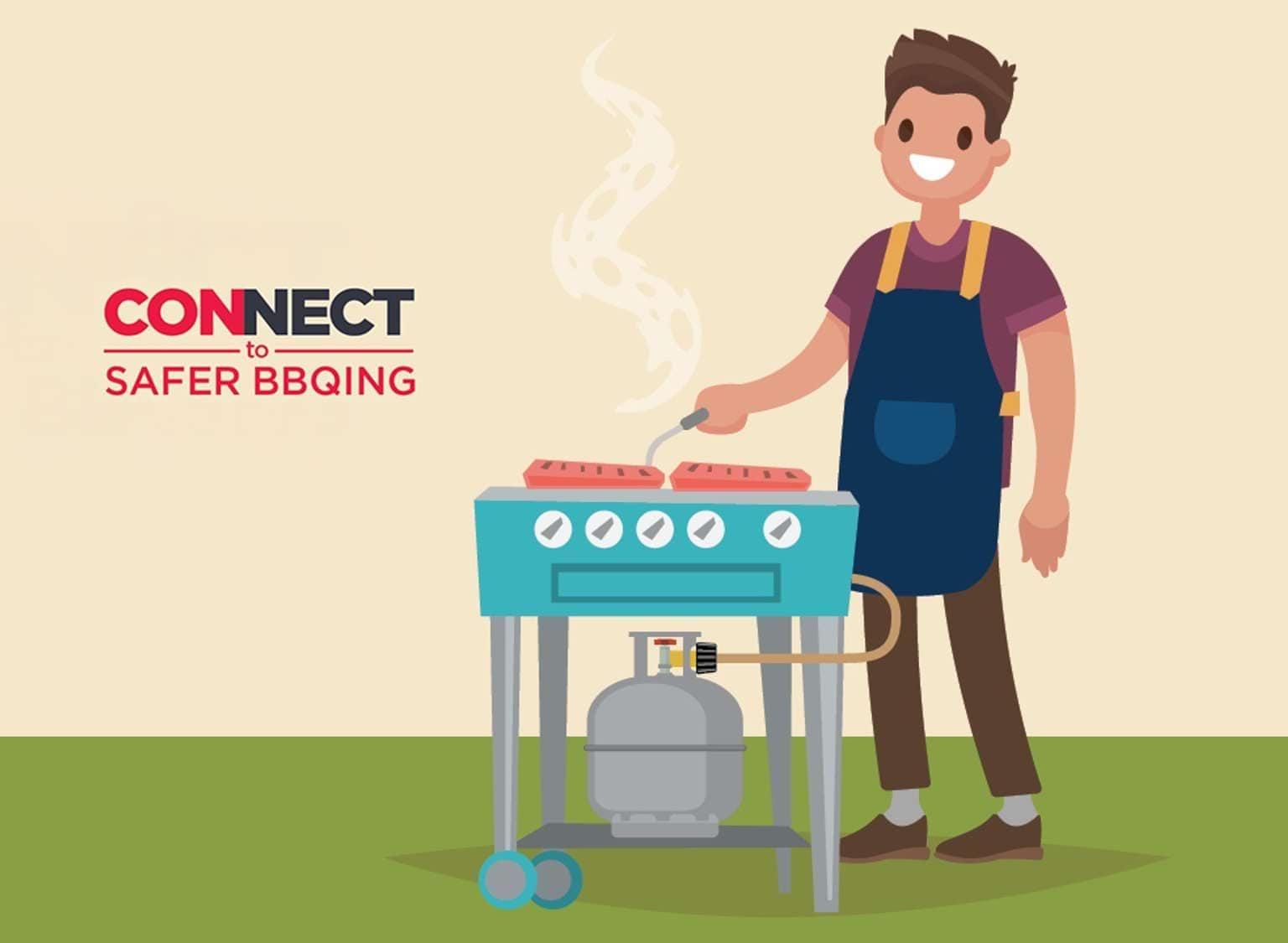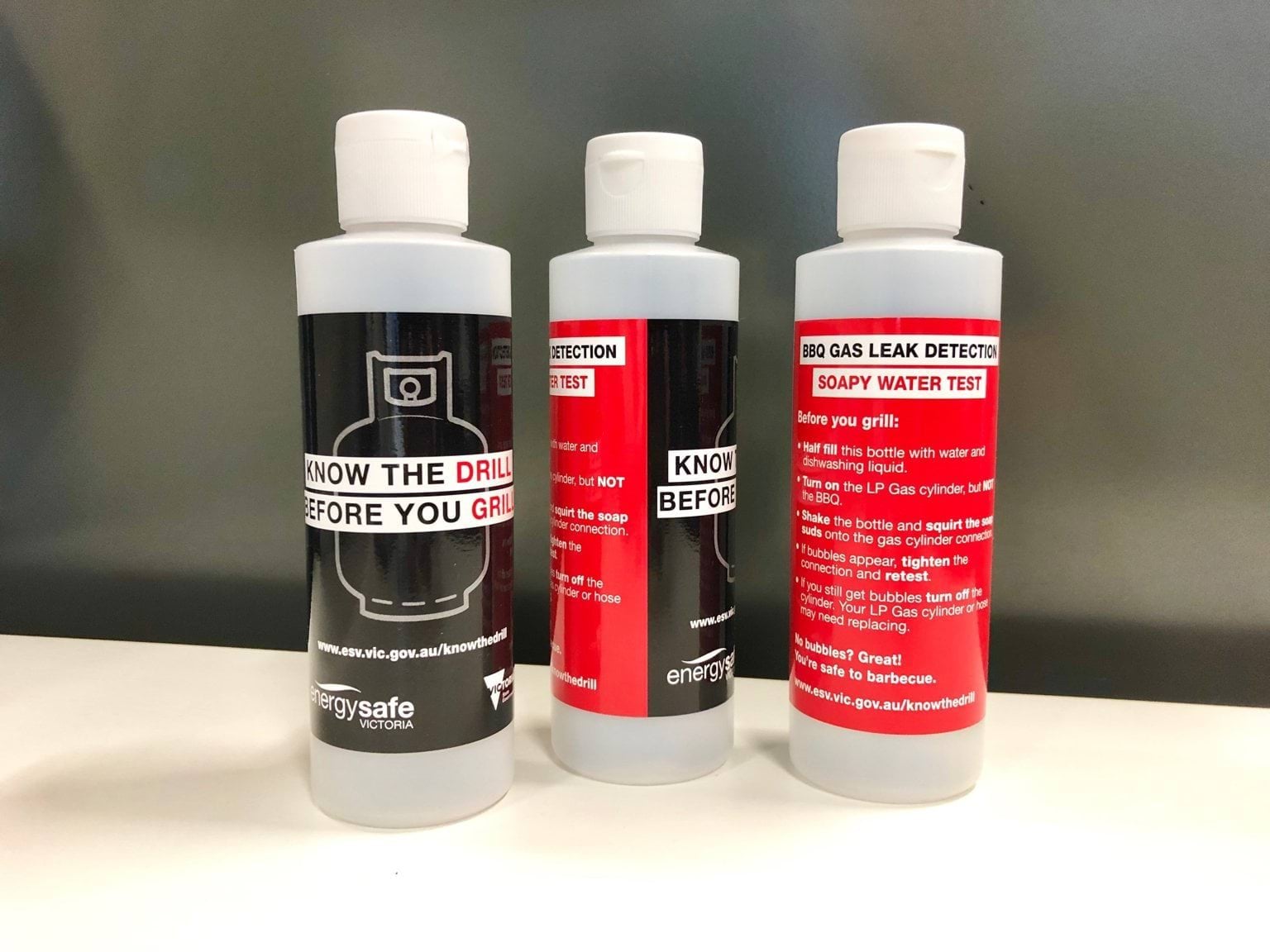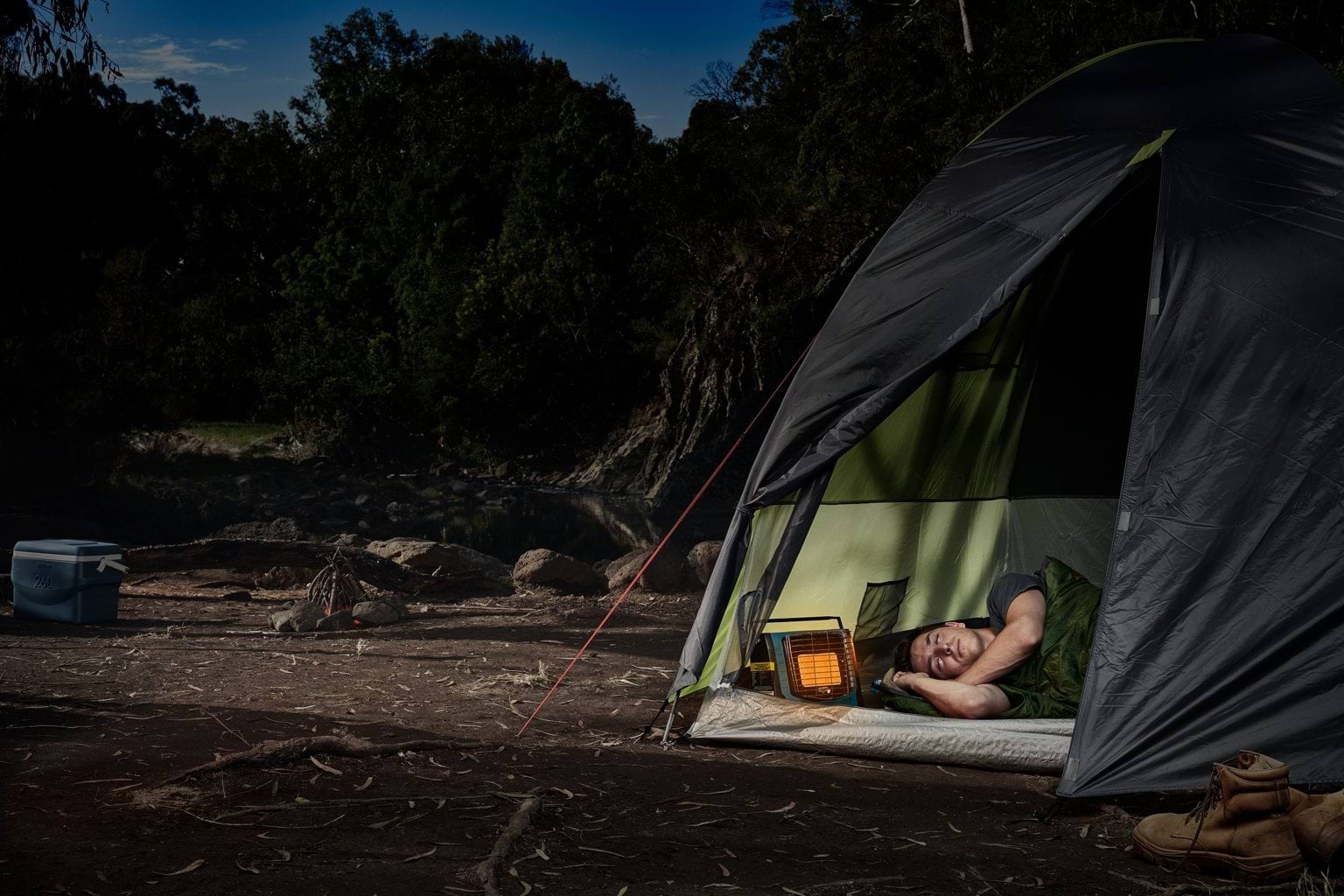Stay safe with a simple soapy water test
Each summer, fire agencies respond to dangerous barbecue fires involving LPG cylinders. Some of these barbecue fires turn into house fires, resulting in serious burns and the loss and damage of family homes.
So, to stay safe, know the drill before you grill.
Get into the habit of doing a soapy water check. Squirt your gas connection with soapy water to make sure there are no leaks. If no bubbles appear, you’re safe to use the barbecue.
The drill - 3 simple steps
Follow these simple steps every time you use your barbecue
- Inspect the hose for signs of perishing or cracking – if the hose is cracked or perished, don’t use the BBQ until the hose has been replaced.
- Use a squeezy bottle filled with soapy water to check the connection for gas leaks (use dishwashing liquid and water). Squirt the connection with the suds from the soapy water solution. Remember:
- Bubbles will form if gas is escaping
- Leak-test the connection to the cylinder every time you connect it or change cylinders
- Serious leaks are common and can be very dangerous
- Check and leak test the connection every time you barbecue.
- If no bubbles appear, you’re safe to cook.
What to do if you see bubbles
- Switch off the gas immediately
- Re-check the hose to make sure it hasn’t perished
- Re-check connections to make sure they are tight – get into the habit of doing this regularly
- Check that the O ring on the connection hasn’t perished
- Check the gas cylinder for damage
- Note: you can’t refill an LPG cylinder if it hasn’t been tested for over 10 years, or if the cylinder has been damaged. Always exchange LPG cylinders at a reputable supplier.
- Re-test with soapy water, and if bubbles still form turn off the gas. Your LPG cylinder or hose may need replacing.
Get into the habit of doing a soapy water check. Know the drill before you grill.
Storing or transporting LPG cylinders
Remember to close the valves on LPG cylinders whenever they are not in use, particularly when they are being transported.
When transporting an LPG cylinder, ensure that it is securely restrained in your vehicle – use a sturdy container, such as a milk crate, to keep the cylinder upright and steady. Make sure you have good ventilation in your vehicle.
Further information

Learn how to connect to safer BBQing
Gas bottles now come with a new valve that eliminates the risk of gas leaks and barbecue fires. The valve connects differently.Connect to Safer BBQing
Free soapy water bottle
Get into the habit of doing a soapy water check with our free soapy water bottle.Order a free soapy water bottle
LPG safety outdoors
Outdoor LPG appliances present a danger of carbon monoxide poisoning if used in areas with insufficient ventilation.Camping and boating with gas
